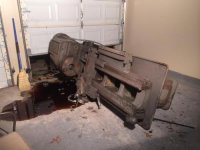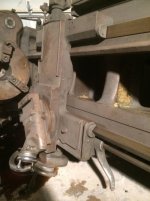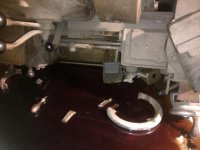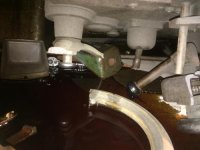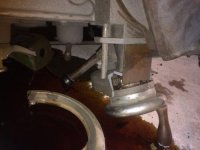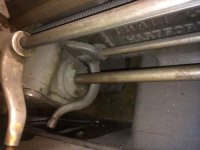JerrySharrett
Senile Member
Jim, IIRC Jackie Schmidt, on this board and lives in Houston has a P&W about that size and would be a good person to contact. He is well versed on machining benchrest quality barrels.
With that long headstock you will have to make at least three bushings for the outboard end of the barrel.
The first bushing will need to be a good slip fit in the spindle bore and the ID will need to be to match the barrel breech OD. The first operation will be to use that bushing to stabilize the
breech end in the headstock while you prepare the muzzle end. With the barrel held in your 4-jaw chuck and the breech end stabilized as above, dial in the muzzle bore. You can then turn a short fit 1/2" or so to a diameter to fit the ID of the next bushing below. (Say 1/2" OD X 1/2" long.)
The second bushing, same OD and the ID will be to fit whatever size you choose to turn the short fit described above. You will then turn the barrel around and indicate the end to be chambered with this bushing stabilizing the muzzle end in the headstock.
The third bushing, same OD, and the ID threaded to fit the barrel tenon thread. After chambering and threading turn the barrel back around again, you will machine off that muzzle snub, reindicate the muzzle bore and crown the barrel.
Yes, you will be turning the barrel around at least 3 times with that machine but the 3 time swap is also required on most lathes like the SB Heavy 10 which has a short headstock.
With that long headstock you will have to make at least three bushings for the outboard end of the barrel.
The first bushing will need to be a good slip fit in the spindle bore and the ID will need to be to match the barrel breech OD. The first operation will be to use that bushing to stabilize the
breech end in the headstock while you prepare the muzzle end. With the barrel held in your 4-jaw chuck and the breech end stabilized as above, dial in the muzzle bore. You can then turn a short fit 1/2" or so to a diameter to fit the ID of the next bushing below. (Say 1/2" OD X 1/2" long.)
The second bushing, same OD and the ID will be to fit whatever size you choose to turn the short fit described above. You will then turn the barrel around and indicate the end to be chambered with this bushing stabilizing the muzzle end in the headstock.
The third bushing, same OD, and the ID threaded to fit the barrel tenon thread. After chambering and threading turn the barrel back around again, you will machine off that muzzle snub, reindicate the muzzle bore and crown the barrel.
Yes, you will be turning the barrel around at least 3 times with that machine but the 3 time swap is also required on most lathes like the SB Heavy 10 which has a short headstock.





